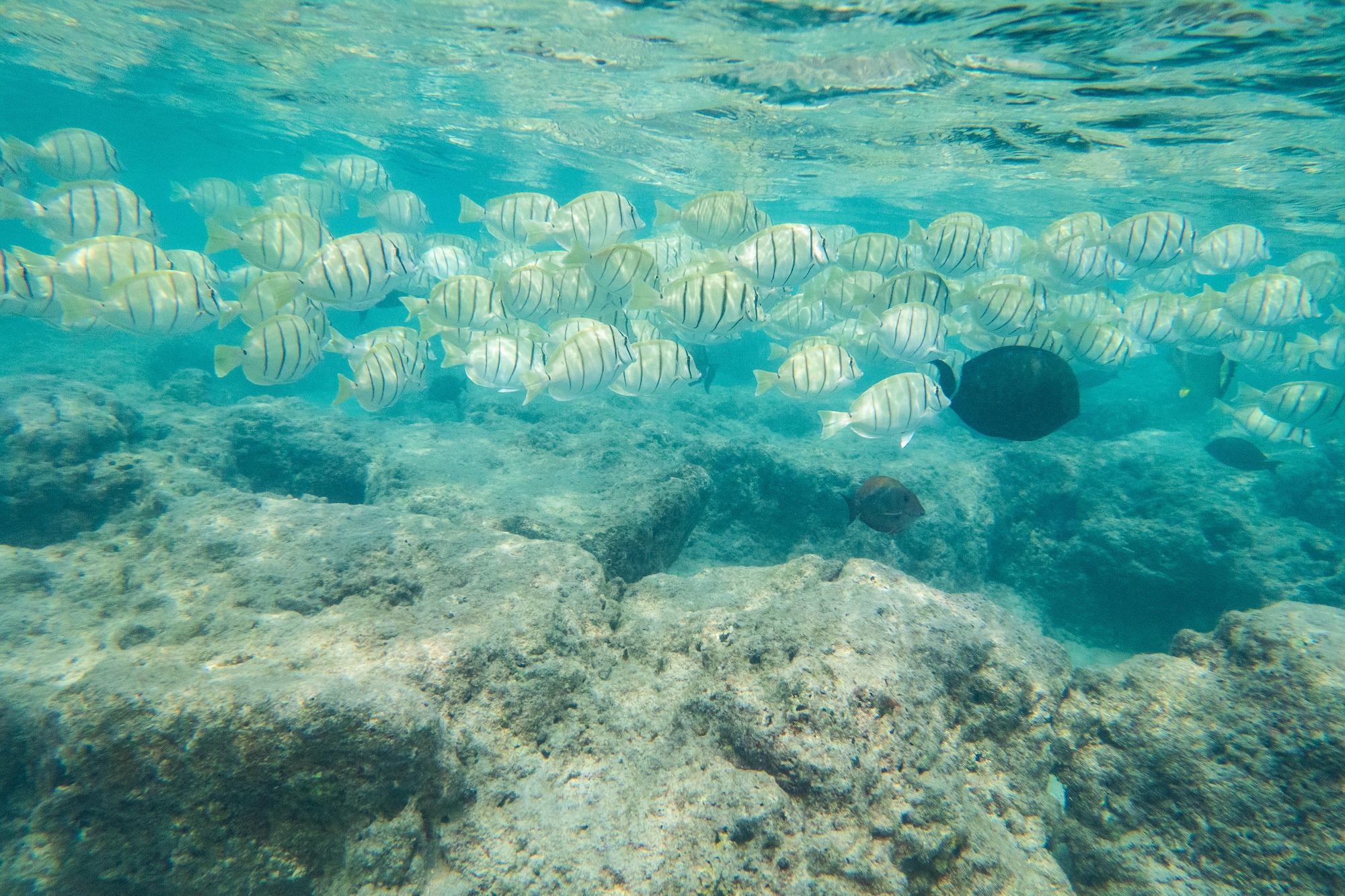Mar 1 2021
Marine protected areas (MPAs) surrounding Oʻahu do not sufficiently safeguard populations of herbivorous reef fishes that tend to eat algae present on coral reefs.
 A large school of surgeonfishes swims over a shallow Hawaiian reef. Image Credit: Noam Altman-Kurosaki.
A large school of surgeonfishes swims over a shallow Hawaiian reef. Image Credit: Noam Altman-Kurosaki.
That is the main conclusion of a study reported in the Coral Reefs journal by scientists from the School of Ocean and Earth Science and Technology (SOEST) of the University of Hawaiʻi at Mānoa.
There are more than 10 species of herbivorous urchins and 20 species of herbivorous fishes generally found on Hawaiian reefs. Such species consume algae growing on reefs, a process known as herbivory, contributing to the coral reefs’ strength by avoiding dominance of algae that can result in excessive growth of corals.
The research group discovered that out of the four marine-protected regions surrounding Oʻahu, which were evaluated in the study, three did not offer biologically relevant benefits for herbivorous fish populations in comparison with reefs present outside the areas.
Marine protected areas are a fishery management tool to limit or prevent fishing to help the recovery and maintenance of fish abundance and biomass inside the MPA. An effective MPA should lead to a considerably higher abundance and biomass of fishes inside the MPA boundaries that would otherwise be caught by fishers but that wasn’t what our study found.
Erik Franklin, Study Senior Author and Associate Research Professor, Hawaiʻi Institute of Marine Biology, School of Ocean and Earth Science and Technology, University of Hawaiʻi at Mānoa
The other factors affecting the biomass of herbivorous fishes are habitat complexity and depth, indicating that environmental characteristics of coral reefs might have had a huge effect on herbivorous fish populations compared to MPA protection.
Importance for Hawaiʻi
The State of Hawaiʻi’s Division of Aquatic Resources leads the Marine 30×30 Initiative as part of the Sustainable Hawaiʻi Initiative. The Marine 30×30 Initiative is dedicated to the effective management of Hawaii’s nearshore waters with 30% labeled as marine management regions by 2030.
At present, 5% of waters under state jurisdiction and within three nautical miles of the shore have certain forms of marine management. However, no-take MPAs banning fishing only constitute less than one-half of 1% of the nearshore waters. Achieving the stated aim of the 30×30 Initiative would need an expansion of marine managed areas to include an extra 25% of state waters in Hawaiʻi.
Our results suggest that prior to an expansion of MPAs in Hawaiian waters, more effort should be directed to effectively manage the existing MPAs to see if they meet the desired management objectives. The addition of more MPAs throughout the state that have similar performance to the Oʻahu MPAs would just lead to a series of paper parks that don’t provide biologically significant conservation benefits while decreasing fishing opportunities.
Noam Altman-Kurosaki, Study Lead Author, Graduate Student, Marine Biology Graduate Program, University Of Hawaii at Manoa
Study Details
According to Franklin, the study led to a comparative analysis of herbivorous fish and urchin populations within and outside Oʻahu MPAs that showed biologically relevant differences in fish biomass between the MPAs and reference areas, apart from one site—Hanauma Bay.
Statistical methods were used as part of the analyses to evaluate the effects of protecting the population inside MPAs and the impact that variations in benthic habitats attributed to the findings.
The team of researchers, which included Franklin, Altman-Kurosaki, and Professor Celia Smith from the UH Mānoa School of Life Sciences, carried out diving surveys, studied the data, and identified algae specimens, with support from various field assistants.
Journal Reference:
Altman-Kurosaki, N. T., et al. (2021) O‘ahu’s marine protected areas have limited success in protecting coral reef herbivores. Coral Reefs. doi.org/10.1007/s00338-021-02054-5.